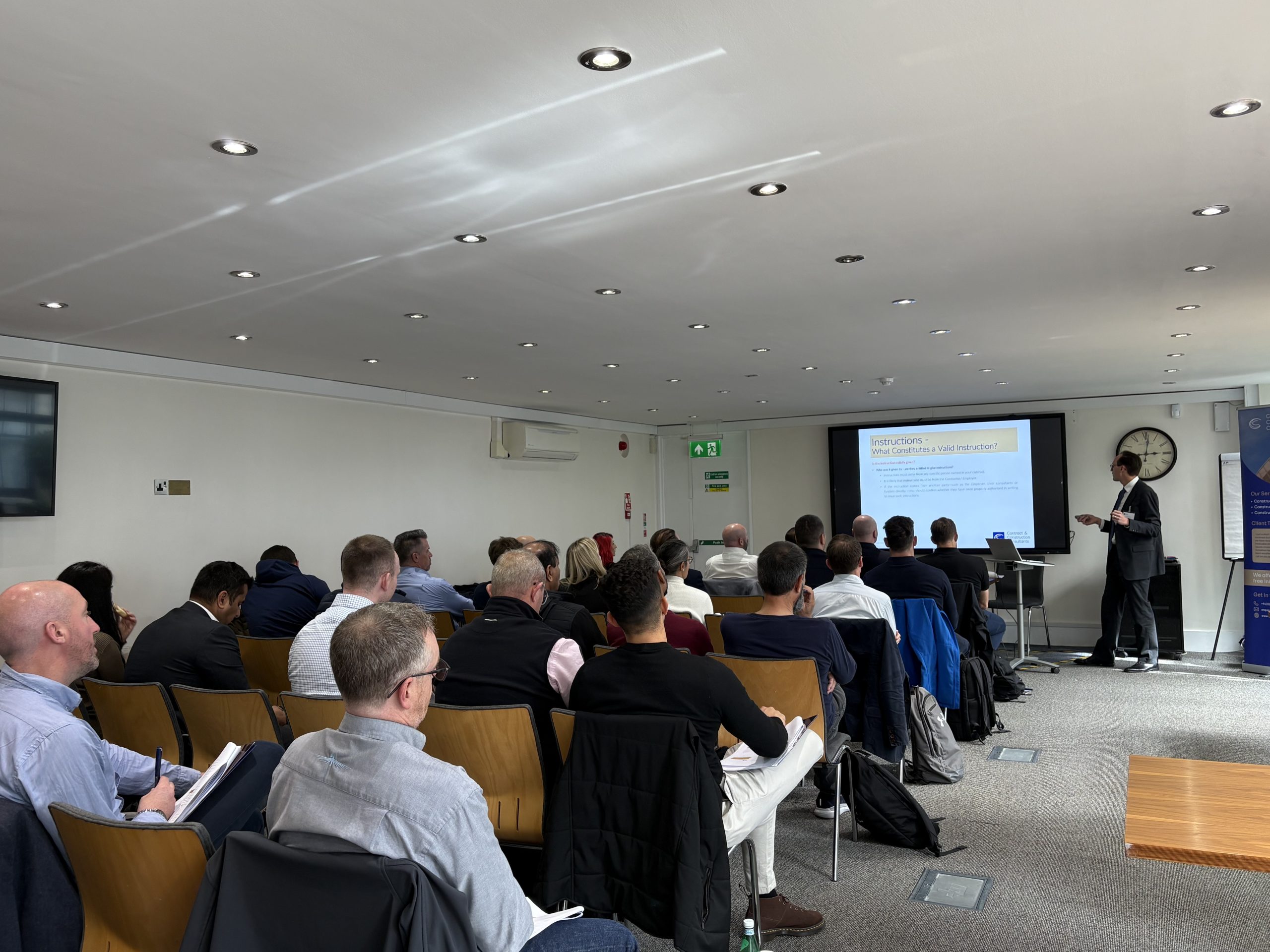We’ve worked closely with various specialist subcontractors delivering temporary works, and we see many of the same problems over and over again. Temporary works, such as scaffolding, differ fundamentally from permanent works, not only in their function, but also in their commercial structure. Despite this, scaffolders are frequently engaged on terms that have been drafted with permanent works in mind.
This mismatch exposes scaffolders to significant risk and frequently leads to disputes, especially around payment structures, retention, and prolonged hire charges. It can also leave parties placing contracts for temporary works exposed and at greater risk of disputes if the contract is not adequate.
The following sets out some of the key issues that arise and offers suggestions for contractual reform that better aligns with the nature of temporary works.
Misalignment between payment structures and temporary works
Scaffolding is almost always priced on a hire basis, typically involving a fee for initial installation, charges for hire for the period it remains in place, and a final fee for dismantling and removal. Standard form contracts such as those in the JCT and NEC suites, however, are designed around valuations for permanent works. Payment is often linked to milestone completions or progress against a bill of quantities, structures that do not naturally accommodate the ongoing nature of hire-based arrangements.
The result is a number of recurring issues. Interim payments frequently fail to capture weekly hire charges, particularly where the scaffold remains in place longer than anticipated. Contracts also rarely define clear trigger points for when hire commences or ends, leaving scaffolders exposed to disputes when scaffolding is left on site due to delays caused by others. It is important that contracts are set up to properly reflect the works being done. In the case of scaffolding, that means including clear terms that deal with hire.
Retention is an inappropriate mechanism for temporary works
Retention is typically set at 3 to 5 percent and withheld until practical completion and expiry of the defects liability period. While that may make sense for permanent works, where the contractor may be required to return and rectify defects, its application to scaffolding is largely arbitrary. Once scaffold structures are dismantled, there is nothing to rectify. Retaining a portion of payment until the end of a defects period serves no practical purpose and operates instead as an interest-free loan to the contractor or employer.
The withholding of retention in such cases is unjustifiable and has increasingly come under scrutiny. In some cases, parties have adopted bespoke provisions dis-applying retention for scaffolders or providing for its immediate release upon removal of the scaffold. These examples should not be seen as exceptions but rather as best practice that recognises the nature of temporary works.
Extra hire and prolongation is a commonly contested area
Scaffolders are often required to leave structures in place for far longer than initially anticipated. This is rarely due to their own programme, but because of delays in follow on trades or other unforeseen events. Standard form contracts generally do not deal adequately with this situation. Whether the extended hire constitutes a variation or is treated as a consequence of delay can significantly affect whether payment is due and how it is claimed.
In the absence of an express contractual mechanism for claiming additional hire, scaffolders can be left exposed. Many contracts require a formal variation to be instructed before any additional payment becomes due. But this is often overlooked or delayed.
Risk allocation and safety
Scaffolders operate in one of the most risk-sensitive areas of the construction site, with significant exposure in terms of health and safety obligations and liability for damage. Despite this, contracts often contain vague or inadequate provisions dealing with ownership and risk during the hire period. Questions such as who is responsible for damage caused by others on site, or what happens if a scaffold is misused or altered, are frequently left unanswered.
Similarly, handover provisions are often poorly defined. Unclear inspection and sign-off processes can lead to disputes over whether the scaffold was safe or compliant at the point of handover. In the event of an accident, these ambiguities can create serious liability issues.
These gaps in the contract sit uneasily with legal duties under the Work at Height Regulations 2005 and HSE guidance, which impose clear obligations on scaffold designers, erectors, and users. Contracts should reflect and support these statutory responsibilities, but too often they fall short.
Recommendations for improved contractual practices
To reflect the unique nature of scaffolding and other temporary works, and to protect the commercial position of those who carry them out, the following steps are recommended:
First, scaffolders should negotiate bespoke subcontract terms that clearly define the scope of their obligations, including the basis for hire, when it begins and ends, dismantling arrangements, early termination procedures, and payment for prolonged hire. Second, the inclusion of retention for temporary works should be challenged and ideally excluded, as it does not serve its intended purpose. Third, the contract should define the specific trigger points for hire charges and include an express mechanism for how extensions of hire are valued and paid.
Further, the contract should include clear provisions dealing with delays caused by others, so that scaffolders are not left to absorb the cost of project overruns. Finally, safety obligations should be tied to clear contractual responsibilities, aligning with the legal framework under the CDM Regulations and Work at Height Regulations to ensure accountability is properly managed.
Final thoughts
Temporary works deserve contractual treatment that reflects their commercial and legal realities. The continued use of standard forms, without adaptation, leaves scaffolders vulnerable to delayed payments, retention withholding, and disputes over prolonged hire. It also exposes contractors and employers to avoidable risk by failing to address key safety and liability issues and increased likelihood of disputes.
For scaffolders and other temporary works specialists, taking the time to negotiate fair terms and understand their contractual risk profile is essential. Where necessary, legal advice should be sought before entering into contracts or when issues arise during the project. As construction law specialists, we support scaffolders in securing commercially viable terms, resolving disputes efficiently, and protecting their interests in a sector where their role, while temporary, is critical to the safe and successful delivery of the works.
How can CCC help?
CCC has decades of experience specifically in the field of construction law and dispute resolution, including adjudications. We assist our clients with:
- Conducting robust contract reviews
- Assist in preparing contracts to set you up for success
- Identify risks, rights and obligations in a contract to better equip you for negotiations
- Provide bespoke training seminars to your team to help administer any project effectively
- Provide advice and legal support if you end up in a dispute
Get in touch to ensure your contracts, claims, and compliance strategies are up to date and effective.



